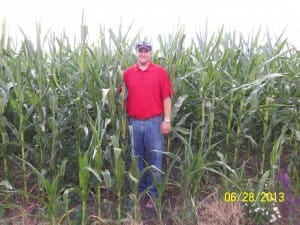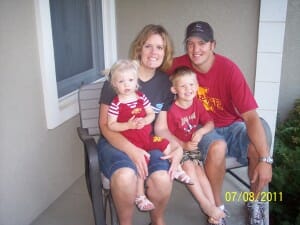We all speak farming: A beginner’s Eastern Europe farm tour
This article was submitted by Savings Incentive Program participant Luke Schuldt. Luke and his wife Linsey raise corn, beans, hay, beef, and some eggs near Tripoli. They recently took over the family farm and are experimenting with rotational grazing and cover crops.
I had the opportunity to go on an Eastern Europe/Russia marketing trip with the Farm Bureau for 2 weeks in June. We traveled throughout Ukraine, Moldova, and Romania looking at their farming methods and agricultural opportunities. Each of these countries raise similar crops compared to here in the Midwest.
In Ukraine, formerly part of the communist USSR, the size of fields and operations are generally much bigger than in Iowa. One farmer that we talked to said he could unfold his 48 row planter and plant 4000 acres before he has to fold it up again. The fields just keep going. They plant multiple varieties of crops, rapeseed (canola), wheat, barley, sunflower, as well as corn and soybeans.
Infrastructure is one of their biggest challenges to becoming more competitive in world agricultural markets. There are mostly very poorly maintained dirt roads; our average speed throughout the country was around 25 to 30mph. One farmer trucks all his grain to a port on the Black Sea. It is 600 miles away and takes a team of two drivers 3 days to get there and back.
Many tractors get started in the spring and don’t shut down until late October and they basically run 24 hrs a day. The combines are generally running 4-5 months each year. If it rains, the tractor driver sits in the tractor and waits for it to dry up enough to start working again. This is in part due to the amount of work they have to do, but more so due to the crime and thefts that occur in this country. Nothing can be left unlocked, or unguarded at any time.
All the farmland is owned by the people. The villagers own the land around each village, so each individual owns roughly 4-10 acres. It cannot be sold, only passed-on with inheritance. The villages are very poor. Most families have a cow, pig, couple chickens, and there are always a ton of dogs running around. Large farmers are typically investors, often from the US or Denmark. They deal with thousands of landlords to rent 10 acres here and 10 acres there to make up their huge fields. They typically have a lawyer on staff to deal with their rental contracts year-round.
Romania, in contrast, is now part of the EU. They are required to follow the rules and regulations of the EU. For example, they are not allowed to use GMOs, even though that is what they were using prior to joining the EU. The farmland and typical farm size in Romania is similar to that here in Iowa.
There are similar struggles for young farmers to get access to farmland in Romania as here in Iowa. At least farms can be bought and sold in Romania, as opposed to Ukraine. One farmer we talked to in Romania farms 1200 acres. He owns about 200, and rents the rest. His son is in college right now and helps farm during the summer. They have started planning to pass the farm to his son someday.
This trip was an amazing experience. Seeing a completely different culture, meeting some great farmers, and trying new things. All in all, even though we spoke different languages, we could still communicate ag- related items. And with the goodbye speech given to us by one Ukrainian farmer, we could tell that the love of the land and what we do as farmers to provide the world with food is a universal language.
Do you know someone like the Schuldt’s who should apply for the Savings Incentive Program? Applications are being accepted until October 4th.


